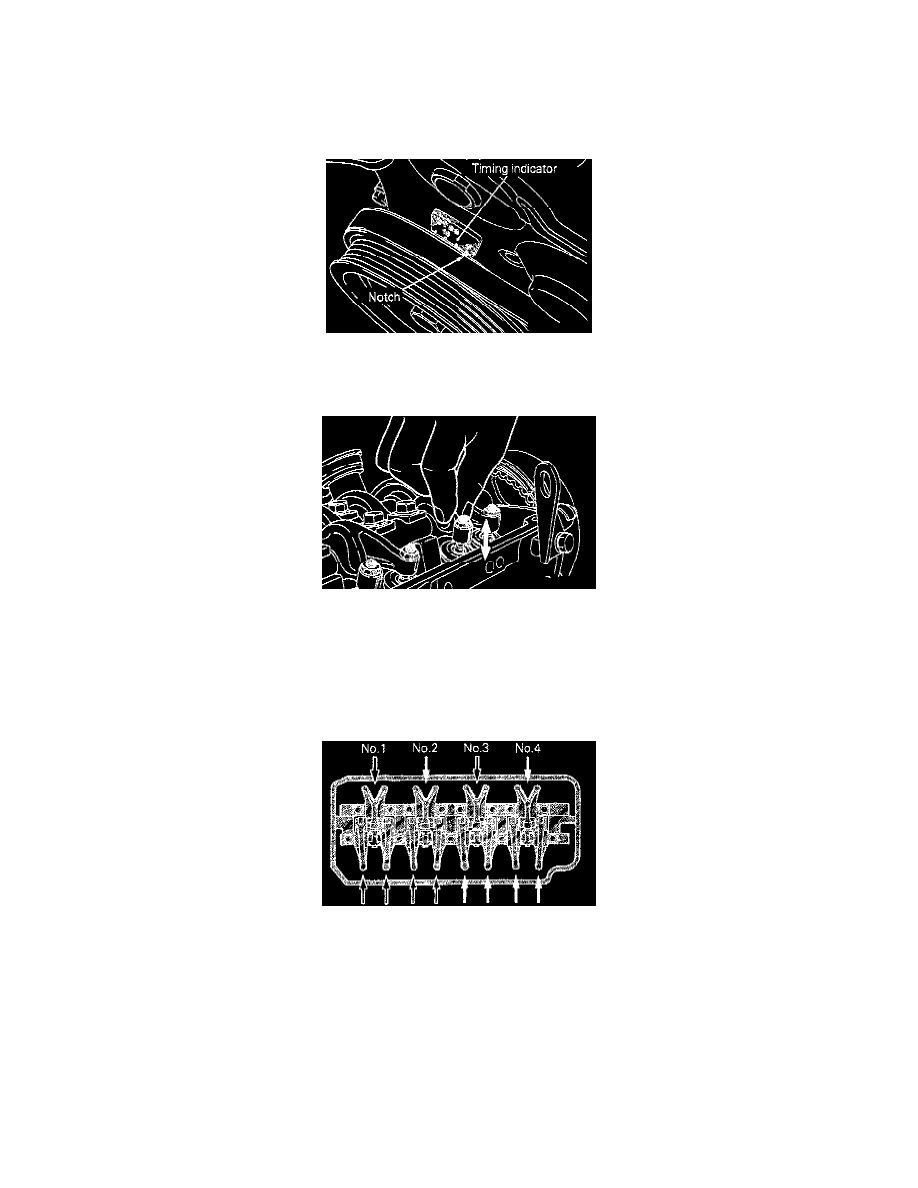Summit Wagon FWD L4-1795cc 1.8L SOHC (1994)

Valve Clearance: Adjustments
Valve Clearance
1. Start the engine and allow it to warm up until the engine coolant temperature reaches 80 to 95°C (176 to 203°F).
2. Remove all spark plugs from the cylinder head for easy inspection.
3. Remove the rocker cover.
Timing Indicator
4. Turn the crankshaft clockwise until the notch on the pulley is lined up with the "T" mark on the timing indicator.
Determining TDC
5. Move the rocker arms on the No.1 and No.4 cylinders up and down by hand to determine which cylinder has its piston at the top dead center on
the compression stroke.
Note: If both intake and exhaust valve rocker arms have a valve lash, the piston in the cylinder corresponding to these rocker arms is at the top
dead center on the compression stroke.
Valve Clearance
6. Valve clearance inspection and adjustment can be performed on rocker arms indicated by white arrows (as shown on image for No.1 & No.3)
when the No.1 cylinder piston is at the top dead center on the compression stroke, and on rocker arms indicated by solid arrows (as shown on
image for No.2 & No.4) when the No. 4 cylinder piston is at the top dead center on the compression stroke.
7. Measure the valve clearance.
If the valve clearance is not as specified, loosen the rocker arm lock nut and adjust the clearance using a feeler gauge while turning the adjusting
screw.
Standard value (hot engine):
Intake valve 0.20 mm (0.008 in.)
Exhaust valve 0.30 mm (0.012 in.)
